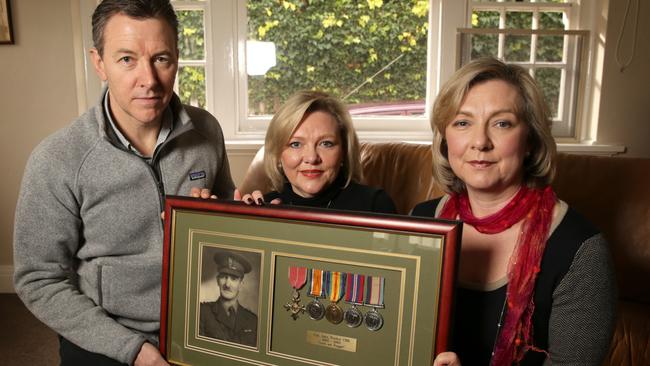Stop or sink: the shot that started war
A YOUNG Australian soldier fired the first shot in WWI, from Port Phillip Bay.

AS a young girl it was hard for Carolyn Smyth to grasp her grandfather’s unique place in history. Did he really fire the first shot of World War I? She had heard her parents talk of that day in 1914, of how “Pa” lined up the German ship in his gunsights as it tried to escape Port Phillip Bay, and how the final order rang in his ears: “Stop her or sink her.”
But she was still young and she never got to ask her grandfather John Purdue to tell his own remarkable story.
Yet on Tuesday, Carolyn and her twin brother John will be standing proudly at Fort Nepean for a ceremony from where their Pa fired that first shot — 100 years ago to the day — heralding a war which would change Australia forever and rob the country of 60,000 young men. “As a young soldier he would have had no idea of the importance of that moment,” says Carolyn.
Australia’s war began when a German freighter, SS Pfalz, departed Melbourne port at 9am on August 5, 1914, less than two hours before Britain, and therefore Australia, declared war.
The Pfalz’s captain, Wilhelm Kuhlken, knew that war was likely any day and so he had delayed departure by one night so that his men could load up enough coal to power them to South America rather than to their original destination of Sydney.
But as they steamed towards the heads and freedom, they did not know that war had been declared that same morning and that this message was being relayed to the gun batteries guarding the heads at Fort Nepean on the Mornington Peninsula. Shortly after midday an initial flag signal from Fort Nepean for the ship to stop went unheeded, because the Australian pilot aboard the Pfalz, Captain Montgomery Robinson, whose job it was to guide all ships safely through the heads, did not see it. At Fort Nepean, Gunner John Purdue and his colleagues were ordered to man the six-inch coastal artillery guns and fire a warning shot across the ship to halt it.
It was a tricky job because if they fired too high or wide, they could have hit Swan Island and people on the other side of the bay.
“They told us to engage,” Purdue once recalled. “The tide was flowing very fast when we had the word to fire and I pressed the electrical trigger and saw it land with a splash in the water, the splash went right up over the bridge of the ship.”
On the ship, the pilot Robinson reacted to the shot by ordering the ship to halt. But he was immediately overruled by Captain Kuhlken who ordered full-steam ahead in an attempt to escape.
A scuffle broke out. “One of the Germans then pulled a gun on him (Robinson),” his great niece Margaret Robinson told The Weekend Australian yesterday. “But he finally persuaded the German captain to stop.”
Recalled Purdue: “The German captain had to be manhandled by Captain Robinson, the pilot, who told him it was no use, the next shot would be amid ship.”
As this drama was unfolding on the water, Purdue was preparing to take what might have been the fatal shot. “The last order we had was stop her or sink her,” he once recalled. But a second shot was not needed. Captain Robinson guided the Pfalz to shore, beginning four long years in a prison camp for the German crew. Their war was over on the first day.
John Purdue’s shot — three hours and 45 minutes after war was declared — was the first volley fired in anger by the British Empire in the Great War. Carolyn says that after her Pa was gone, she realised the significance of his part in history.
She has since taken her children to Port Nepean to visit the site and journeyed to the Australian War Memorial in Canberra to read the official account of that day.
A campaign is now under way to restore the gun that Purdue fired that day. “As you get older you start to reflect on family history and it’s a remarkable story,” she says.



